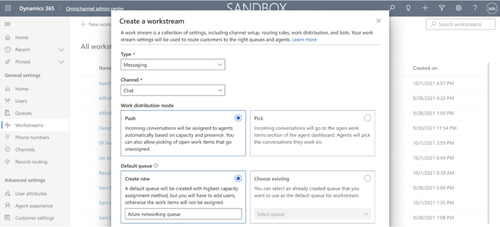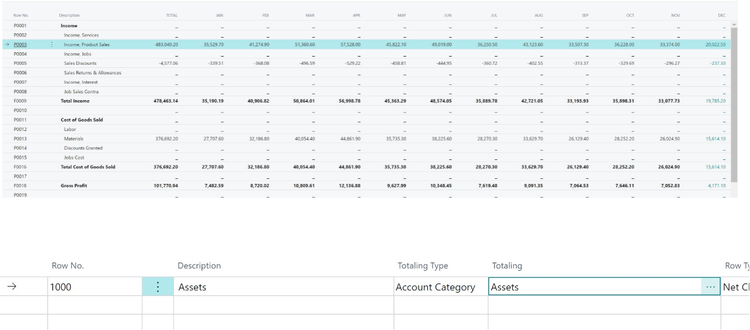What’s coming in the Dynamics 365 2022 Release Wave 1
The Dynamics 365 suite of cloud-based business applications are always being improved as user needs are identified and the cutting edge of technology advances. The coming upgrade is Release Wave 1 of 2022, scheduled from April through September. Some of the foci for these updates across applications include leveraging data, AI, and ideal timing to create better experiences throughout the sales and marketing experience, simplifying onboarding, increasing productivity, optimizing collaboration, and improving connectors and integrations.
Here’s an overview of what’s coming to Dynamic 365 apps—Marketing, Sales, Customer Service, and Business Central—for this release wave.
Marketing
Utilizing data and AI to generate content and deliver it more effectively is a consistent goal of the recent release waves. Personalization and moments-based marketing is a must, and event-based customer journey orchestration is stronger than ever, and still requires no code—capture customer attributes in the customer journey trigger, start another journey within the current journey, run a Power Automate flow, or even send SMS messages with custom keywords and conditional text (when a customer responds to an SMS with a determined keyword, conditional text will send based on that reply).
Create a custom trigger event within a customer journey. Courtesy of Microsoft.
Integrations and unifications across Marketing, Sales, and Customer Service allow for more personalized and informed interactions across all three apps. Microsoft Teams chat is now built into Marketing for fast and easy collaboration, eliminating the need for extra open screens. Target the ideal contacts with the reimagined segmentation builder, which allows you to build complex, no code segments and create segments on leads without requiring a parent contact.
Microsoft Teams chat built into Dynamics 365 Marketing. Courtesy of Microsoft.
Sales
Sales Hub is now out-of-the-box for all environments (existing and new) and preconfigured with core sales and insights features for a quick start right out of the gate. Some Sales Premium license features—Conversation intelligence, sales accelerator, and predictive scoring for leads and opportunities—will now be available to Sales Enterprise license users with a defined monthly limit to demonstrate the value and allow limited use of the features.
Worklists are now personalizable via advanced filtering, and worklist cards have been enhanced to allow for quicker decisions and customizations to contextual info the seller may need. Receive notifications when your customers actively engage, and filter “junk leads” using AI-based models, like those leads with incorrect email addresses, no contact details, etc. Use accuracy reports to measure predicative scoring model performance. Edit quotas inline and vin rollups for easy and quick updates.
Sales Mobile
The Sales Mobile app increases productivity and collaboration from anywhere. Capture phone contacts and log calls from mobile phones directly into Sales. Capture information from handwritten notes or business cards using the phone camera and digitize it into the app. Finally, the integration between Outlook and Sales allows for context-awareness when writing emails—including autofill and templates—so sellers don’t have to jump from app to app to gather relevant info for the email.
Customer Service
The end-to-end customer support application is receiving features to enrich customer engagement, support, self-service, automation and more. Setup tasks will be easier for admin using the Customer Service admin center app, as admin will experience guided setup, co-location of related settings, and a task-based approach to the setup. Users will be able to create, view, and edit templates, then insert them when creating emails for professional, fast, consistent formatting with every email. New inbox capabilities increase productivity by allowing for users to pick and assign conversations from the inbox, work across multiple issues across channels, and customize views, filters, and sorting for their ideal inbox experience.
Customer Service admin center app. Courtesy of Microsoft.
For the knowledge portal, relevance search now includes filters for product, rating, and date it was modified as well as a heightened access control for knowledge articles, as well as analytics to assess the effectiveness of that content. For the Teams integration with Customer Service, look forward to AI-generated conversation summaries to eliminate the need to read through long transcripts of Teams conversations while still understanding the context of the conversation. Chat within Teams right in Customer Service and retain these chats as records for future reference. The management process can also be simplified and minimized through default queues and diagnostics in unified routing.
Default queue in Unified Routing. Courtesy of Microsoft.
Business Central
As Microsoft’s premier midmarket ERP solution, Business Central is constantly receiving updates and new features to improve user experience. Bank reconciliation has been modified to show more bank details as of the posting, and three fields have been added: G/L Balance, Outstanding Payments, and Checks. These changes will improve validation and auditing. To allow for easier interactions when a customer is also a vendor, customer and vendor balances can now be consolidated to reduce transactions and receipts.
Customer and Vendor balance consolidation. Courtesy of Microsoft.
You can now map payment terms, freight terms, shipping methods, and hipping agents between Business Central and Microsoft Dataverse manually, with no code, and they can be coupled, synchronized, or deleted easily. New UI will improve Demand Forecasting by adding the ability to add forecasts for item variants on the Demand Forecast Entries page or via the Edit in Excel action. Financial reporting layouts can now be created with greater ease with a layout that the user determines, including landscape or portrait format, G/L account categories as Totaling filters for columns, export and import for account schedules, and retained headings for improved structure. For those who prefer to create and edit layouts in another manner, they can now use Excel for that process.
Financial reporting layout changes. Courtesy of Microsoft.
A new collaboration between Business Central and Shopify for an improved and easy-to-use e-commerce and business management connection to allow for order, stock, and customer info to sync and fulfillment to streamline. Other integration improvements include synchronization for sales quotes and orders between Business Central and Dynamics 365 Sales – to and from both apps. The Teams integration now boasts more capabilities for added speed and collaboration, including the ability to pin a Business Central tab to a channel. The Outlook add-in now allows you to add email attachments sent from external customers to Business Central records. New capabilities added to the Power Automate and Power Apps connector ensures higher use confidence, including improved reliability, support for finding, filtering, and sorting data, and adding related records.
Onboarding is becoming easier than it ever was within Business Central with release wave 1 as more features are added to flatten the learning curve that is often associated with developing skills within a new application. Context-aware links within a more modern Help pane will populate to enable users to self-educate whenever they find a roadblock in their learning. Users can follow a guided tour to understand their settings and personalization options, and in-product teaching tips that both Microsoft and partners can edit will support both new and experienced users understand pages, controls, and more.








